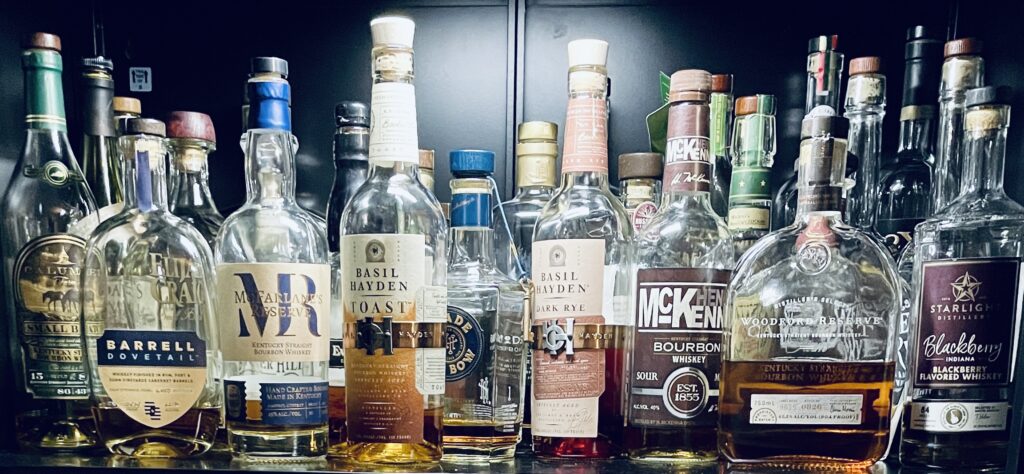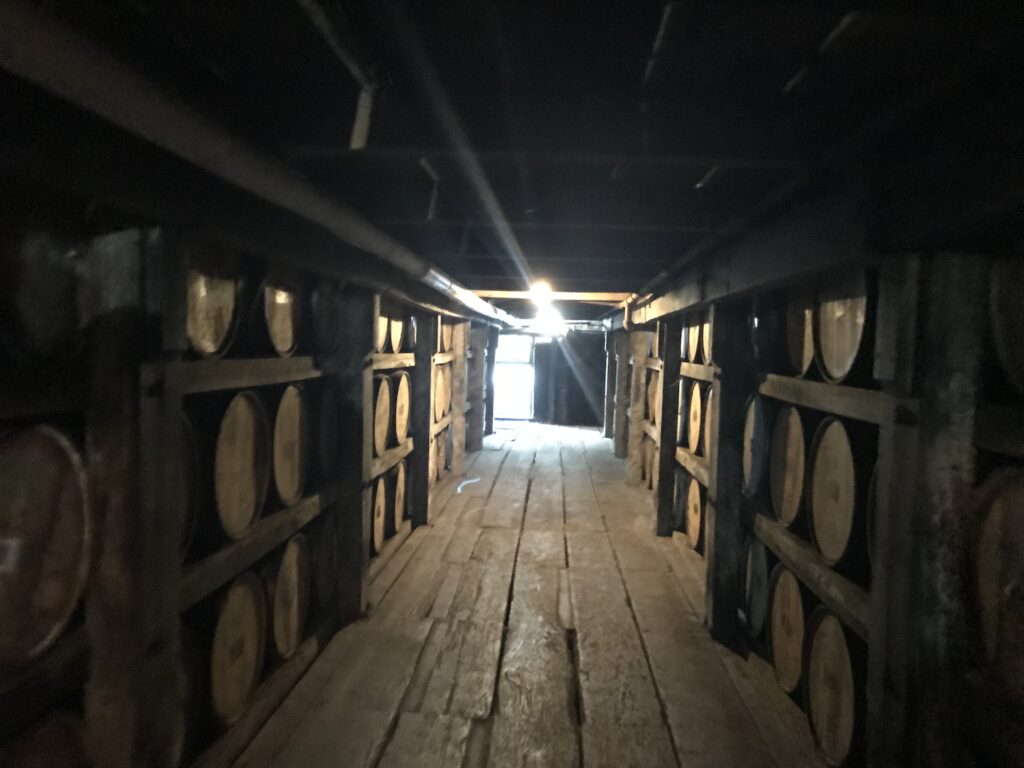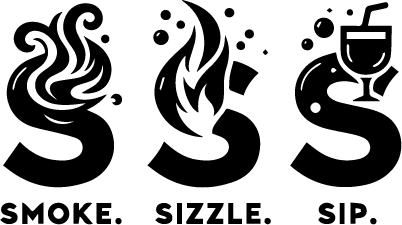How Bourbon Is Made
Bourbon, often heralded as “America’s Native Spirit,” has a unique allure that stems from its rich history, meticulous production process, and distinctive flavor profile. The journey of how bourbon is made is both fascinating and intricate, involving a blend of art and science that results in a beverage loved by connoisseurs and casual drinkers alike. In this comprehensive guide, we’ll dive into the nuances of bourbon production, exploring everything from the ingredients to the aging process, and uncovering what makes this classic American whiskey so special.
What is Bourbon?
Bourbon is a type of whiskey that originates from the United States, particularly associated with Kentucky. It’s a distilled spirit made primarily from corn and aged in new charred oak barrels. The distinctive characteristics of bourbon include a rich caramel and vanilla flavor, a result of its unique ingredients and aging process.

Characteristics of Bourbon
To be labeled as bourbon, the spirit must adhere to specific criteria:
- Made in the USA: Bourbon must be produced in the United States.
- At least 51% Corn: The grain mix must contain at least 51% corn.
- Aged in New Charred Oak Barrels: Bourbon must be aged in new barrels that have been charred on the inside.
- Distilled to No More than 160 Proof: The distillation process must not exceed 160 proof (80% alcohol by volume).
- Entered into the Barrel at No More than 125 Proof: The spirit is entered into the aging barrel at a maximum of 125 proof (62.5% alcohol by volume).
- No Additives: Only water can be added to bourbon; no other flavoring or coloring is permitted.
The Legal Requirements for Bourbon
The United States has strict regulations that define what can and cannot be labeled as bourbon. These regulations, often referred to as the Federal Standards of Identity for Bourbon, ensure that the spirit remains true to its origins and maintains its quality.
Origin of Bourbon
Bourbon originated in Kentucky, which remains a central hub for production. While bourbon can technically be made anywhere in the United States, about 95% of it is still produced in Kentucky, due to the state’s ideal conditions for aging the spirit. The area’s unique climate and water, filtered through limestone, contribute significantly to bourbon’s distinctive flavor.
Legal Definition and Regulations
The Federal Standards of Identity for Bourbon include the following key points:
- Made in the United States: Bourbon must be produced in the U.S., and while it is synonymous with Kentucky, it can technically be made in any state.
- Aged in New Charred Oak Barrels: Bourbon must be aged in new barrels that have been charred on the inside. This requirement contributes to the spirit’s distinctive flavor profile.
- Mash Bill: The mash bill, or grain mix, must contain at least 51% corn. The remaining grains can include barley, rye, or wheat.
- Distillation and Barrel Entry Proof: The spirit must be distilled to no more than 160 proof and entered into the barrel at no more than 125 proof.
- No Additives: Bourbon can contain no additives or coloring, except water.
These regulations ensure that bourbon retains its unique qualities and is distinguishable from other types of whiskey.
The Federal Standards of Identity for Bourbon
The Federal Standards of Identity for Bourbon were established in 1964 when the United States Congress recognized bourbon as a “distinctive product of the United States.” This declaration cemented bourbon’s identity and guaranteed its authenticity for consumers around the world.
The Key Ingredients of Bourbon
Bourbon’s unique flavor profile comes from a combination of carefully selected ingredients. Each component plays a crucial role in the final product, influencing everything from taste to aroma. The three key ingredients are:
- Grains
- Water
- Yeast
The Grain Mix
Bourbon’s grain mix, also known as the mash bill, is predominantly corn, but also includes other grains like rye, wheat, and malted barley.
- Corn: The primary ingredient, corn, provides bourbon with its characteristic sweetness.
- Secondary Grains: The secondary grains vary, with rye adding a spicy kick, wheat lending a softer touch, and malted barley aiding in fermentation.
Water
Water is a crucial ingredient in bourbon production. The best bourbons often come from areas with limestone-filtered water, such as Kentucky. This pure water, free of iron, contributes to the clean, smooth taste of bourbon.
Yeast
Yeast is essential for fermentation, converting sugars into alcohol. Distilleries often have proprietary yeast strains, which contribute to the distinct flavor profiles of their bourbons.
The Bourbon Making Process
The process of making bourbon is a meticulous and time-consuming endeavor that requires precision and patience. This process includes several distinct steps, each contributing to the unique character of the final product.
Mashing
Mashing is the first step in the bourbon-making process. The grains are ground into a coarse meal and mixed with water to create a mash. This mixture is then cooked to extract the fermentable sugars from the grains.
- Mixing the Grains: The ground grains are mixed with water, usually heated, to begin the extraction of sugars. The temperature is carefully controlled to optimize sugar extraction.
- Cooking the Mash: The mash is then cooked to break down the starches into simpler sugars, which will later be fermented.
Fermentation
Fermentation is where the magic of alcohol production begins. Yeast is added to the cooled mash, converting the sugars into alcohol.
- Adding Yeast: Yeast is introduced into the mash to start the fermentation process. The specific yeast strain used can greatly affect the flavor of the final product.
- The Fermentation Process: The yeast consumes the sugars and produces alcohol and carbon dioxide. This process usually takes about three to four days, during which the mash becomes a beer-like substance called “distiller’s beer.”
Distillation
Distillation is the process of concentrating the alcohol in the mash. Bourbon is typically distilled twice.
- How Bourbon is Distilled: The “distiller’s beer” is heated, and the alcohol is separated from the water and other components. The first distillation takes place in a column still or pot still, producing a low-proof “white dog.” The second distillation occurs in a doubler or thumper, increasing the proof.
- The Role of Copper Stills: Copper stills are often used because they remove sulfur compounds, which can create off-flavors.
Aging
Aging is perhaps the most critical step in developing bourbon’s distinctive flavor profile.

- Use of New Charred Oak Barrels: Bourbon must be aged in new charred oak barrels, which impart flavors of caramel, vanilla, and spice.
- Aging Requirements: Bourbon must be aged for a minimum of two years to be labeled as “straight bourbon.” The aging process allows the spirit to interact with the wood, absorbing flavors and aromas.
Bottling
Bottling is the final step in the process. The bourbon is filtered, proofed, and bottled.
- Proofing and Bottling: Before bottling, the bourbon is usually diluted with water to achieve the desired proof. It’s then filtered and bottled, ready for enjoyment.
Types of Bourbon
Bourbon comes in various types, each with its own unique characteristics and production processes. The differences often lie in the aging, blending, and proofing, leading to a range of flavor profiles and styles.
Straight Bourbon
Straight Bourbon is the purest form of bourbon.
- Aging: It must be aged for at least two years in new charred oak barrels.
- Additives: Straight bourbon contains no additives or flavoring.
- Flavor Profile: It typically has a robust flavor, often with hints of vanilla, caramel, and oak.
Bottled-in-Bond Bourbon
Bottled-in-Bond Bourbon follows stringent government-regulated standards.
- Government Standards: It must be the product of one distillation season, one distiller, and one distillery.
- Aging: The bourbon must be aged for at least four years.
- Proof: Bottled-in-bond bourbon is bottled at exactly 100 proof (50% alcohol by volume).
Small Batch Bourbon
Small Batch Bourbon is a blend of bourbon from a select number of barrels.
- Blending: It is made from a relatively small number of barrels, usually between 10 and 50, allowing for greater control over the flavor profile.
- Flavor Profile: Small batch bourbons often have a more complex and nuanced flavor, as the blending process allows distillers to balance different characteristics.
Single Barrel Bourbon
Single Barrel Bourbon is bottled from a single barrel, not blended with any other barrels.
- Uniqueness: Each bottle of single barrel bourbon is unique, as it comes from a single barrel that may have distinct characteristics.
- Flavor Profile: The flavor profile can vary widely from barrel to barrel, often showcasing a particular set of flavors more strongly.
How Bourbon Differs from Other Whiskeys
Bourbon is often compared to other types of whiskey, such as Scotch, Irish whiskey, and Tennessee whiskey. While all these spirits share similarities, they also have distinct characteristics.
Bourbon vs. Scotch
- Ingredients: Scotch is typically made from malted barley, while bourbon is primarily corn-based.
- Aging: Scotch is aged in used barrels, while bourbon is aged in new charred oak barrels.
- Flavor Profile: Scotch often has a smoky or peaty flavor, while bourbon tends to be sweeter and smoother.
Bourbon vs. Irish Whiskey
- Ingredients: Irish whiskey is usually made from a mix of malted and unmalted barley, while bourbon is made from at least 51% corn.
- Distillation: Irish whiskey is typically triple-distilled, making it smoother, while bourbon is usually double-distilled.
- Flavor Profile: Irish whiskey is lighter and fruitier, while bourbon is richer and sweeter.
Bourbon vs. Tennessee Whiskey
- Process: Tennessee whiskey undergoes an additional charcoal filtering step known as the “Lincoln County Process.”
- Geography: Tennessee whiskey must be made in Tennessee, while bourbon can be made anywhere in the U.S.
- Flavor Profile: Tennessee whiskey often has a smoother flavor, while bourbon retains a richer character.
The Flavors and Aromas of Bourbon
One of the most delightful aspects of bourbon is its complex and inviting flavor profile. The flavors and aromas are influenced by various factors, including the ingredients, the distillation process, and the aging in new charred oak barrels.
Key Flavor Components
- Caramel and Vanilla: These are signature flavors of bourbon, derived from the charred oak barrels. The caramelization of wood sugars during charring contributes to these sweet notes.
- Oak and Spice: The new charred oak barrels also impart flavors of toasted wood and spice, adding depth and complexity to bourbon.
- Fruity Notes: Bourbon can have hints of fruits like cherry, apple, and citrus, often resulting from the fermentation process and yeast.
- Smoke and Char: Some bourbons have smoky or charred flavors, which come from the charred barrels. These notes add a robust character to the spirit.
Influence of Ingredients
- Corn: The primary ingredient, corn, contributes sweetness to bourbon. The higher the corn content, the sweeter the bourbon tends to be.
- Rye: Rye adds spiciness and complexity, often resulting in flavors of pepper, clove, and nutmeg.
- Wheat: Wheat provides a softer, mellower flavor, resulting in a smooth and rounded bourbon.
- Barley: Barley contributes to the fermentation process and can add malty or nutty flavors.
Influence of Aging
- Barrel Interaction: During aging, bourbon interacts with the wood, absorbing flavors and aromas. The longer the aging, the more pronounced the oak and spice notes become.
- Temperature Fluctuations: Bourbon is typically aged in rickhouses, where temperature fluctuations cause the spirit to expand and contract within the barrel, drawing out different flavors.
- Angel’s Share: During aging, some of the bourbon evaporates, known as the “angel’s share.” This loss concentrates the remaining spirit, intensifying the flavors.
The Bourbon Industry Today
The bourbon industry has experienced a resurgence in recent years, with both established distilleries and new craft producers thriving. This renaissance has led to increased innovation and diversity in bourbon offerings.
Major Bourbon Producers
- Jim Beam: One of the oldest and largest bourbon producers, known for its iconic Jim Beam White Label and other brands like Knob Creek and Basil Hayden’s.
- Buffalo Trace: Another historic distillery, producing highly sought-after bourbons like Buffalo Trace, Eagle Rare, and the coveted Pappy Van Winkle.
- Wild Turkey: Known for its bold and spicy bourbons, Wild Turkey is a favorite among enthusiasts.
Bourbon Production in the United States
- Kentucky: Kentucky remains the heart of bourbon production, with over 95% of the world’s bourbon coming from the state. The climate, water, and heritage make it an ideal location for bourbon.
- Other States: While Kentucky dominates, other states like Tennessee, Indiana, and Texas also produce notable bourbons, contributing to the spirit’s diversity.
Global Impact of Bourbon
- Export Market: Bourbon is increasingly popular worldwide, with exports growing rapidly. The United States exports bourbon to countries like the United Kingdom, Japan, and Australia.
- Cultural Influence: Bourbon has become synonymous with American culture, often featured in movies, music, and literature, and celebrated in festivals and events.
Tips for Enjoying Bourbon
Bourbon is a versatile and enjoyable spirit that can be appreciated in many different ways. Whether you’re a seasoned connoisseur or a novice, understanding how to best savor this drink enhances the experience.
Tasting Bourbon
- Proper Tasting Techniques:
- Look: Observe the color of the bourbon. The longer it’s aged, the darker it will be.
- Smell: Gently swirl the glass and take a sniff. You may notice different aromas like caramel, vanilla, or spice.
- Taste: Take a small sip and let it coat your tongue. Notice the initial flavors, the mid-palate, and the finish.
- Taste Descriptors:
- Sweet: Notes like caramel, vanilla, or honey.
- Spicy: Hints of cinnamon, clove, or black pepper.
- Fruity: Flavors of apple, cherry, or citrus.
- Nutty: Tastes of toasted nuts or almond.

Serving Bourbon
- Ideal Glassware:
- A Glencairn glass or a tulip-shaped glass is ideal for tasting bourbon, as it concentrates the aromas.
- For cocktails, a rocks glass or an Old Fashioned glass is commonly used.
- Serving Temperatures:
- Bourbon is often served neat, but it can also be enjoyed with a splash of water or over ice.
- Adding water or ice can open up the flavors, particularly in high-proof bourbons.
Bourbon Cocktails
- Classic Bourbon Cocktails:
- Old Fashioned: Made with bourbon, bitters, sugar, and a twist of citrus peel.
- Mint Julep: A refreshing cocktail made with bourbon, mint, sugar, and water, traditionally served in a silver cup.
- Whiskey Sour: A blend of bourbon, lemon juice, sugar, and optionally, egg white.
- Modern Bourbon Cocktails:
- Bourbon Smash: A mix of bourbon, lemon, mint, and simple syrup, muddled together.
- Boulevardier: A sophisticated cocktail with bourbon, sweet vermouth, and Campari.
- Kentucky Mule: A twist on the Moscow Mule, using bourbon, ginger beer, and lime.
Conclusion
In conclusion, the journey of how bourbon is made is a remarkable blend of tradition, science, and artistry. From the selection of grains and the fermentation process to the aging in new charred oak barrels, each step contributes to the distinct character of this iconic American spirit.
Bourbon’s appeal lies in its rich flavors, its versatility, and its deep-rooted connection to American culture. Whether you prefer your bourbon neat, on the rocks, or in a classic cocktail, exploring the world of bourbon is a rewarding experience that offers endless possibilities.
Explore Bourbon
So, whether you’re a seasoned bourbon enthusiast or just beginning to explore this beloved spirit, there’s a world of flavors and experiences waiting to be discovered. Cheers to the timeless craft of bourbon making and the enjoyment it brings!
Frequently Asked Questions
How long does it take to make Bourbon?
The process of making bourbon varies, but straight bourbon must be aged for at least two years. Most bourbons are aged between four to ten years, with some premium varieties aged even longer.
What is the difference between Bourbon and Whiskey?
Bourbon is a type of whiskey, but not all whiskey is bourbon. The key differences include the grain mix (at least 51% corn for bourbon), the use of new charred oak barrels, and the geographical origin (must be made in the U.S.).
Can Bourbon only be made in Kentucky?
While most bourbon is made in Kentucky, it can be produced anywhere in the United States. Kentucky remains the epicenter due to its ideal conditions for bourbon aging.
How should I store Bourbon?
Bourbon should be stored upright, away from direct sunlight and temperature extremes. Properly stored, bourbon can last indefinitely.
What is the best way to drink Bourbon?
The best way to drink bourbon is a matter of personal preference. It can be enjoyed neat, with a splash of water, over ice, or in a cocktail. The key is to enjoy it in a way that enhances the flavors and suits your taste.
